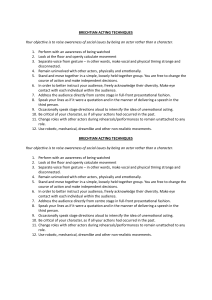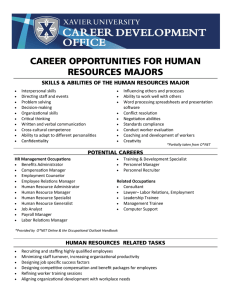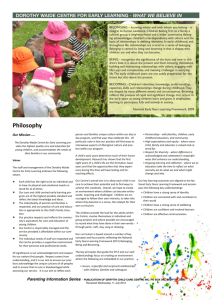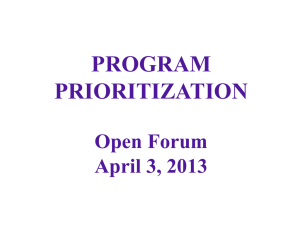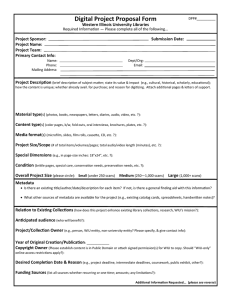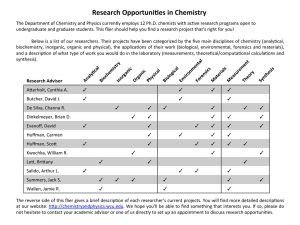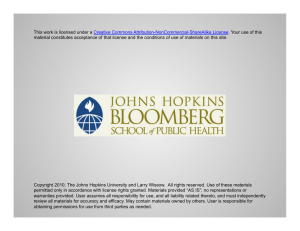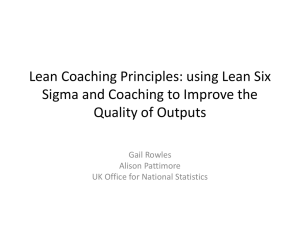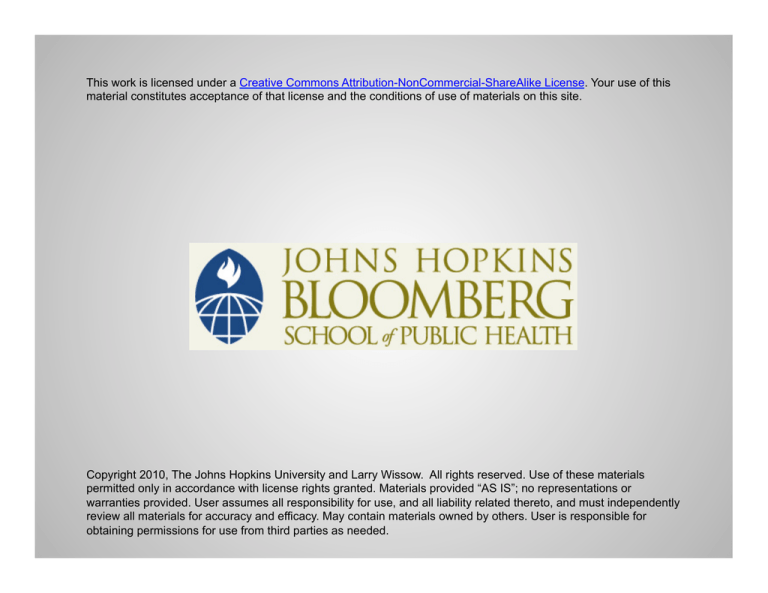
This work is licensed under a Creative Commons Attribution-NonCommercial-ShareAlike License. Your use of this
material constitutes acceptance of that license and the conditions of use of materials on this site.
Copyright 2010, The Johns Hopkins University and Larry Wissow. All rights reserved. Use of these materials
permitted only in accordance with license rights granted. Materials provided “AS IS”; no representations or
warranties provided. User assumes all responsibility for use, and all liability related thereto, and must independently
review all materials for accuracy and efficacy. May contain materials owned by others. User is responsible for
obtaining permissions for use from third parties as needed.
Connec&ng the macro to the micro: social networks, social support and social capital ISBT 2010 What we will cover • Intro to social networks – Defini&ons – Forces that create/perpetuate (focus on macro) • Mezzo level – Social capital • Micro level – Social support Social networks • Social networks – Defini&on: people linked by “interac&ons of interest” – Can be a member of mul&ple networks simultaneously • Core network – Sources of support, eg, emo&onal, informa&onal, financial – People you live/eat with • Risk networks – People you have sex with/do drugs with – Common aQendance at a behavior seRng, eg, Fells Point bar • Work/professional networks • Recrea&on/leisure networks – Mul&ple networks can have a lot of or minimal overlap Characteris&cs of networks • Size (number of members) • Density of connec&ons • Rela&onship to other social or to physical boundaries (homogeneity) • Frequency of contact • Number of types of “transac&ons” that can take place (mul&ple func&ons) • Reciprocity http://blog.kiwitobes.com; data source US SEC
http://blog.kiwitobes.com; data source US SEC
What forms/shapes networks? • Common needs, desires, concerns • Boundaries and opportuni&es “determined” by culture, SES, policy/poli&cal environment – PaQerns of physical and social mobility – ARtudes toward others – Home Owner’s Loan Corpora&on policies in the 1930s reinforced ethnic segrega&on paQerns in Philadelphia and other ci&es Hierarchy of ethnici&es, 1933, FHA •
•
•
•
•
•
•
•
•
•
English, German, Scot, Irish, Scandinavian North Italian Bohemian or Czech Polish Lithuanian Greek Russian Jewish of “lower class” Southern Italian Negro Mexican From: Pie&la A. Not in my neighborhood. 2010;62. Redlining in Richmond • Home Owner’s Loan Corpora&on (HOLC) surveyed and classified Richmond neighborhoods on the basis of terrain, proximity to resources, and demographics • Visit hQp://americanpast.richmond.edu/holc/neighborhoods/map to view interac&ve maps and other documents Blockbus&ng in Bal&more • Real estate industry prac&ce of “breaking” an all-­‐white neighborhood by plan&ng an a paid black tenant, scaring white home owners into below-­‐market sales of their homes. • Homes were then purchased and sold at above-­‐market rates to African Americans, oeen at usurious terms. • hQp://www2.citypaper.com/printStory.asp?id=19948 • Not in My Neighborhood: How Bigotry Shaped a Great American City by Antero Pie&la. hQp://www.amazon.com/Not-­‐My-­‐Neighborhood-­‐Bigotry-­‐
American/dp/1566638437 2002 Bal&more City Census Tracts by Racial Composi&on Yellow dots = scaQered site public housing Green dots/squares = public or elderly housing with 50% or more Black residents Red crosses = “projects” slated for demoli&on Source: ACLU Affinity Group Marke&ng • Wells Fargo used an affinity group marke&ng team to aggressively market subprime loans to qualified black buyers • NAACP filed suit against several large financial ins&tu&ons for allegedly pursuing similar tac&cs Impact of neighborhood characteris&cs on social networks and developmental dispari&es • Dangerous neighborhoods – Make social interac&on less possible – Increase isola&on •
•
•
•
•
Mothers may be more isolated, have fewer social contacts Less access to collabora&ve paren&ng Decreased social support and social capital More likely to be depressed, fa&gued Less posi&ve/s&mula&ng interac&on with children Func&ons of networks –individual level • Social support – Instrumental and financial – Informa&onal – Emo&onal • Opportuni&es for engagement – Meaningful social roles • Opportuni&es for person-­‐to-­‐person contact – Oeen seen as risk Social support – instrumental and emo&onal factors • Provision of informa&on – BeQer decision-­‐making, increased sense of control, open avenues to posi&ve coping • Prac&cal assistance – Financial, transporta&on, other assistance that make coping possible or relieve other stresses • Emo&onal empathy and comfort – Enhance confidence and self-­‐esteem, reduce isola&on, reduce nega&ve affect, stress Studies of social support and health • Many studies suggest broad rela&onship between social support and health status – Most famous: Alameda County study, published 1979: par&cipa&on in social networks related to decreased all-­‐cause mortality – Woolcock: controlling for BP, age, exercise, and other risk factors, chance of adult dying in the coming year is cut by 50% if join one group and by 75% if join two. Social networks and behavior • Norms and standards – Can be “prescrip&ve” in that network members ‘tell you what to do’ – rules and laws • Based in reciprocity • Based on claim to scarce resources allocated by the network – Sub-­‐Saharan HIV adherence example Func&ons of networks – “mezzo” • Social capital – Resources that can be called on by individuals for need or growth – Characteris&cs of network that facilitate coordinated ac&on • Social influence (for later) – Feedback – Norms and models Social capital • A resource that can be called upon when needed for collec&ve well-­‐being • Does not require emo&onal closeness, familiarity, or even frequent contact • Common thread is feeling of reciprocity, trust, shared norms • Improves “efficiency” – do more with rela&vely scarce resources Reciprocity and collec&ve efficacy • Increased reciprocity with those you are acquainted with • Increased trust in those you don’t know • Increased willingness to contribute to common causes – See others as deserving – Feel that others will look out for you, too Social capital examples • Your “Rolodex” or “Facebook” page • Coun&ng on neighbors to keep an eye on your house or children • Saying hello to the guard at the door • Knowing who you could call for… Islam MK, Intl J Equity Health 2006;5:3
Spa&al clustering of collec&ve efficacy • Clustering demonstrates how neighborhoods influence each other – Dark colours indicate sta&s&cally significant clusters – High efficacy areas tend to cluster with high and vice versa – Significant boundary areas might be places for interven&ons that spread capital to new parts of a city – opportuni&es for “bridging” Map of intergenera&onal closure Red = clusters of high efficacy
Blue = clusters of low efficacy
Data source: Sampson RJ. The neighborhood context of
well-being. Perspect Biol Med 2003;46 suppl 3: S53-S64
Social capital and health-­‐related issues • At ecologic level: – More spending on educa&on – More philanthropy – BeQer child and adult health status – Less crime • Cause or effect? – More income equality Summing up • Many links of SES to health status probably mediated by the ways in which SES defines who we live and work with • Social mechanisms behind health-­‐SES links for both absolute and rela&ve SES • Inequality self-­‐perpetua&ng in that it perverts incen&ves and reduces resources and interac&ons that would otherwise mi&gate inequality

